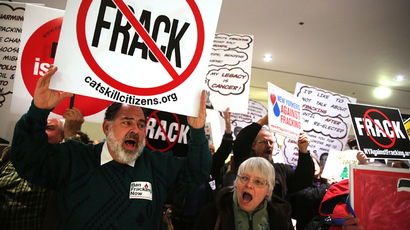New Mexico nuclear waste site has ‘radiological event’

Officials are monitoring the levels of airborne radiation at the deep underground facility in southeastern New Mexico where the US government disposes of its low-grade nuclear waste.
Air samples were taken around the Waste Isolation Pilot Plant
(WIPP) after a monitoring system detected traces of radiation on
the underground levels of the facility around 11:30 pm Friday
night, the US Department of Energy said in a news release.
The 139 workers above ground at the time of the incident were
ordered Saturday to remain where they were as a precaution. None
of the employees tested positive for radioactive contamination,
and all non-essential personnel were released, Department of
Energy spokesman Roger Nelson said.
Nelson said the cause of the leak remains a mystery, since
inspection crews have not yet gone underground. He added that he
was not sure when that would happen.
Surface samples show no sign of radiation, thus suggesting the
leak was "not significant," he said.
But officials aren’t taking any chances.
"We are going to take measurements and make sure we
understand it" before sending down a team, Nelson said.
US Rep. Steve Pearce issued a statement, saying: "WIPP has
acted quickly and cautiously to ensure the safety of personnel
and the local community."
The incident comes on the heels of an underground truck fire at
the facility that prompted an evacuation. Six workers were
treated for smoke inhalation on Feb. 5.
Asked if the incidents were related, Nelson said: "I just
can't think of a scenario where there would be a
relationship."
WIPP is the country's only deep nuclear waste facility. It takes
plutonium-contaminated waste from Los Alamos National Laboratory
and other federal nuclear projects.
It is located approximately 26 miles (42 kilometers) east of
Carlsbad, New Mexico, in a region known as the southeastern New
Mexico nuclear corridor, which also includes the National
Enrichment Facility near Eunice.














